The Assembled Picture Library of New York City
The Assembled Picture Library of New York City
by Eric J. Herboth

Esopus Space, the New York exhibition and performance venue operated by the same nonprofit foundation that publishes Esopus magazine, is currently playing host to The Assembled Picture Library of New York City, a new art show-cum-workshop brainstormed by artists Robin Cameron and Jason Polan. It’s a collaborative exhibition; it’s a workshop: it merges the notions of gallery exhibit, art studio and potluck dinner into an interactive exercise that the two New York-based artists hope will “create a collaborative and creative relationship with the general public, and also to enable a sense of community around artists’ processes.”
The gist of the project is an attempt to burrow into that narrow, often disorienting slice of artistic work that truly relies on the execution of a concept to achieve its footing. The outcome of experiments in conceptual art can be anyone’s guess going in — the very point of such an exercise is for the idea itself to wrestle the proverbial brush from the artist’s hand and manifest itself like magic. More often than not, the execution of such exercise is rendered as an inconsequential logistic on the checklist navigating from the artist’s idea to their finished work. As Sol LeWitt put it half a century ago: “In conceptual art the idea or concept is the most important aspect of the work. When an artist uses a conceptual form of art, it means that all of the planning and decisions are made beforehand and the execution is a perfunctory affair. The idea becomes a machine that makes the art.”
Some might label such projects as simply ambitious Remote Control Art, thinking that the perspective gained or the statement made during the process is, at least in theory, preordained. But art and inspiration are intrinsically fickle, and inasmuch as Marcel Duchamp and Robert Rauschenberg were striking out at the formalism of “art” so too are Cameron and Polan shaking their fists at established constructs. Much of conceptual art is only collaborative insofar as having a third party execute a planned project with predetermined materials; for Cameron and Polan the hive mind of participants and guests act as interloping variables that make art of an experiment as much as an experiment of art. With no undue umbrage toward LeWitt’s outline, in creating the Assembled Picture Library of New York City the two artists found a concept for a process, not a process by which to achieve a concept.
If this seems heady for a community cut-and-paste activity, that’s because it is and it isn’t. True conceptual art both is and is not a completely cerebral endeavor. In the case of the current exhibition, Polan said the two artists came upon the concept in a roundabout fashion. “Robin had the general idea written in her notebook before she and I had met in person,” he said.
Separately the two had worked on similar but vaguely complimentary pieces. Polan has done extensive illustration work on projects that are generally cute (giraffes and elephants are familiar topics) or commentary (his book Every Piece Of Art in The Museum Of Modern Art is 50 pages of his simple line drawings of “every piece of art that was visible to the public at the museum from January 19 to January 31, 2005”) or interactive (“One Hour of Art” and “One Day of Art” consignment projects), if not all three. Once the two had “hung out [and] drawn together a few times” Cameron, an art director who has developed several books and projects that combine visual and narrative art (The Blown Mind and All the Emails I Have Sent Myself Since I Moved to New York), pitched the idea. “She thought that maybe it related to some projects I had worked on too, so she mentioned it to me,” Polan said.
From the vantage point of the exhibition now in progress, the collaboration’s genesis seems completely organic. “Found these in a filing cabinet that was bought off of Craigslist,” Cameron posted last month alongside images on her website that hint at The What of the current Esopus show. Earlier, on his own site, Polan had documented “The Ream Project” that he conceived as an earlier and scaled-down experiment with viewer collaboration at MoMA, hinting at The How of the show. “I liked it,” Polan said of Cameron’s idea and the potential communion of the two artists’ sympathetic themes and aesthetics. “We talked over the overall idea, and the specifics a bit and decided on what it is now.”
What it is now is an evolving mass of collage art, a community doodle that is as much raw brainstorm as it is pontification on art in the age of social networking. Sitting at a table, cutting up old maps and pocket knife guides with scissors, are participants more likely to mull over their primary school art projects from years gone by or find themselves prodded by a spark of creativity to pair a headshot of Harrison Ford with the torn pages of a tree identification book? You can lead a horse to water, as the saying goes, but no construction stands independent of its materials. To jump-start the process, the artists provided access to their own personal image archives, with some 1000 images as source material. Their initial picture cache is in turn being augmented with visitor contributions to the collection, which Cameron and Polan have encouraged. “I am both,” Polan said when asked if he and Cameron are refined collectors of paper detritus with a method to image archiving or just Collier brothers packrats. “Robin is a bit more organized than me,” he said, but added that Cameron “also has a lot of things” that necessitate more organizational structure.

Beginning with that random assortment of 1000 images — some were complete, some were jagged scraps — the idea was to then have viewers manipulate and reconfigure the disparate pieces using a copy machine in the gallery space “to make new artwork from the available materials.” Along with quaint black and white photos of city landmarks like the Brooklyn Bridge, the pool of materials assembled also includes product packaging, foreign currency, “unorganized manuscripts, vintage advertisements of strange products, rare prints, modest drawings and more.”
The name Assembled Picture Library of New York City comes from the precise description of the project. “We wanted the name to be literal and official,” Polan said. “We are both big fans of the picture collection at the library on 40th Street and 5th Avenue. This project is related to that space and we thought the title could reflect that.”
The exhibition began on February 16th and in terms of both on-site work and visitor contributions to the pool of source images the reaction has been strong. “We have been excited at both,” Polan said. “We have had some good friends and artists involved — Mary & Matt, Andy Beach from The Reference Library, Alexandre Singh, Sam Falls, Robert Warner, Team Lump — with supplying us with additional source material and have also had a great batch of people working on things within the space.”
Knowing how cyclical and often synchronized the public consciousness can be, one wonders how or if patterns or higher frequencies of certain types of images in the collections would influence the work created. Would there be, say, lots of pictures of dogs and not many pictures of aircraft carriers? Or would topical media points like Barack Obama, the Olympics, Haitian earthquake rubble or Tiger Woods feature prominently? “There are a lot of ‘Pauls’ we have found,” Polan said. “Paul Newman, Paul Rand, Paul McCartney… There are also a lot of pictures of owls.”
Beyond the unexpected recurrence of Pauls and Strigiformes, Polan said the most refreshing reveal thus far has been the process itself. “I think just the way people have worked with the source material-the possibilities for things are endless, we are finding out, and people are getting really creative with the project,” Polan said. To see both raw materials and work created at the exhibition, check up at the event’s Tumblr page.
The Assembled Picture Library of New York City began on February 16th and will run until March 18th, at which time a closing reception will be held from 6–8pm at Esopus Space. Thus far there haven’t been any paper jams to clog up the process. “We have been pleased with the copier,” Polan said. “Answering this question makes me a little nervous!”
Eric J. Herboth is a freelance writer, journalist and artist living in rural central Germany. Over the past ten years he has contributed essays, criticism and analysis to a number of publications, including LAS Magazine, where he is the managing editor. He received degrees in aeronautics and aviation from Saint Louis University as a minor, and is an FAA licensed commercial pilot. He is also a professional bicycle mechanic and retired beekeeper, and once urinated on then-St. Louis Cardinals pitcher Bruce Sutter.
What The Heck Is Up, Eric Roberts?
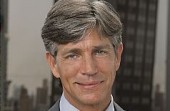
Every now and again I ask myself, “Hey, what’s going on with Eric Roberts these days?” And sometimes-although far too frequently for my liking-I am made aware!
He’s starring in the Roger Corman telepic “Sharktopus” for Syfy.
The cable network announced the casting Thursday. Roberts will play a research scientist who, along with his daughter, develops a secret military weapon: A hybrid shark/octopus that can be controlled by electrical implants.
“But when the controls break down, the monster goes on a killing rampage at the resort beaches of Mexico,” Syfy promises.
Okay, I get it, everyone’s got to eat. But if it’s all the same, Eric Roberts, I am still going to remember you this way, shouting, “They took my thumb, Charlie!” I think that’s probably better for both of us.
Stupid Currency Markets Will Allow Chuckleheaded Canucks To Think They're Better Than Us
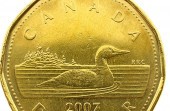
I am horrified by economic estimates suggesting that Canada’s currency-nicknamed “the loonie” after the nation’s first Prime Minister, Don Cherry-will at some point this fall be worth more than our own American dollar. This is not simply a matter of jingoistic pride; let the peso soar above the greenback and I’ll be down in Cozumel quicker than you can say “cheap hotel stay in Cozumel.” No, this is about Canada somehow being able to feel a sense of superiority to its bigger, cooler brother just because it has a sensible financial system and socialized medicine and much less gun crime AND a more valuable dollar. This aggression cannot stand. I would rather live in a fascist dictatorship than to endure in a world where a magazine is actually a dollar less north of the border than it is down here. Prorogue this, you ice-farming scumbags.
Meet Your Vegetables: The Farmers Market in Winter
by Jaime Green
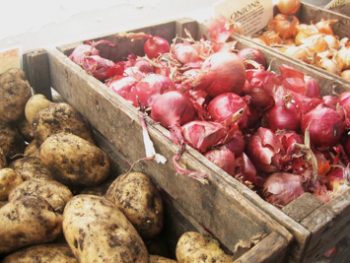
By this time of year, the Inwood farmers market is a slim affair. Never particularly expansive even in the summer, the shoppers and sellers have dwindled. There is a trickle of, I don’t know, either hardcore locavores or devotees of the greenmarket social scene, the urban hippie parents catching up on neighborhood gossip and scheduling playdates. There is local wine and local seafood and apple turnovers the size of your face. I don’t know if those are made with local flour, and I’ve always worried it would be an asshole move to ask.
This market takes up both sides of a block at the edge of a park that’s at the edge of Manhattan. Beyond the market you can see the Henry Hudson Bridge over the waters of Spuyten Duyvil, the creek that makes Manhattan an island. Closer there are tennis courts and woods between you, standing in the farmers market, and the Bronx, across the little creek.
In summer the place is mobbed by the neighborhood’s weird mix-young Dominican mothers and abuelas, middle-aged white ladies with toddlers and no make-up and skirts woven by lady artisans in Palestine, off-Broadway actors with cute boyfriends and large dogs. There’s the fishmonger (if mongering is something you can do at a stall with a plastic tarp roof), the winery, the honey farm, the bakery and then the organic bakery, which also boasts biodynamic produce. (I’m under the impression that biodynamic farming is an offshoot of homeopathy, and so a bullshit idea by association? They have good brownies there, though.)
Then, in winter, once the autumn leeks and kale run out, it’s potatoes, mushrooms, and three kinds of onions, and winter squash that might be a little past its prime. The cellared apples are cheaper than they were in the fall, but just as good, all fifteen or howevermany varieties. Eggs are four dollars a dozen, which is probably worth the farmer’s promise, which you probably believe, that the chickens that laid them are happy hens, eating grass and bugs in the sunshine. Maybe a little hay and corn now, on the far side of winter.
But still, for this and those apple turnovers, the market’s not empty, and there’s enough produce to make it feel worthwhile, as long as you don’t need your vegetables to be green.

There was also this little kid wearing really awesome pants.
Last week, Marion Nestle and David Ludwig wrote an op-ed for JAMA [pdf] calling for the abolition of front label claims on foods. No “boosts your child’s immunity!” on a box of enriched Frosted Flakes, just ingredients and the familiar panel of nutrition “facts.” (Those scare quotes make me feel like a birther conspiracy theorist but about trans fats. Although, speaking of, did you know that foods can have just under half a gram of trans fats in a serving and be able to proclaim, “trans-fat free!” Then, if you eat two or three servings, you die.)
The European Food Safety Authority just handed down a bunch of decisions on food marketers’ petitions, citing lack of information and proof, and general vagueness even identifying the substances on which the claims would be made. (Do you know what a probiotic is? Do you know what it is that has to be added to yogurt, that isn’t in yogurt already?) They rejected claims for vitamin D, probiotics, green tea, black tea, lutein, beta glucans, meso-zeaxanthin, alpha-lipoic acid, melatonin, peptides, xanthan gum, sugar-free gum, guar gum, gamma-linolenic acid (GLA), fermented whey and linoleic acid.
“Now with meso-zeaxanthin! It does something!”
(I checked, and it’s supposed to be good for your eyes.)
(Eat a fucking carrot.)
It used to be that margarine (once the savior of the heart disease/saturated fat-phobic, now a trans fat pariah, because we really have no idea what we’re doing) had to be dyed pink because it was not allowed to masquerade as real butter. Now we’re at me asking my mom why she still buys that insanely expensive probiotic yogurt when it’s not actually making her feel any better. (She shrugs and deflects, and I feel bad for asking.)
In 1906 the Pure Food and Drug Act prohibited food labels from carrying claims that were “false or misleading in any particular,” and for decades the FDA’s interpretation put just about all nutrition claims under that umbrella. The olden days FDA opposed even the fortification of some foods with nutrients so that, say, a chocolate bar couldn’t boast its high content of iron or vitamin C.
In 1990 Congress passed the Nutrition Labeling and Education Act, which instructed the FDA to allow food labels to bear “scientifically substantiated” health claims. (Scare quotes, direct quote, or both?) 1994’s Dietary Supplement Health and Education Act permitted supplement labels to advertise support for structures or functions of the body, and the food industry demanded similar permission. It’s safely taken for granted, at this point, that whatever the food industry demanded, they got.
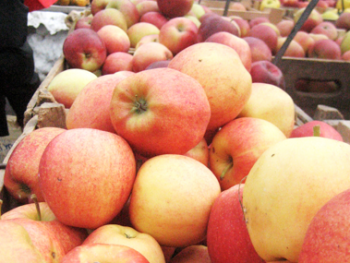
The apples I take home from the greenmarket don’t have front or back labels, just a magic marker sign over their crate telling me the variety and the price. (Last year there also would’ve been a “Don’t fear the pockmarks!” sign explaining that early summer hail had scarred the baby apples as they grew. They didn’t come with nutrition facts but they sure told me about the weather outside Ithaca six months before.)
Heading down the hill to the supermarket where I will guiltily buy a bunch of nonlocal C-Town Swiss chard, because I have need for vegetables that are actually green and acorn squash doesn’t count, I leave behind neighbors stocking up on local bison sausage and scallops or whatever. Apple turnovers, sauerkraut and jam. In the winter the Dominican families are all but gone; it’s just the gentrifying families who like living near the parks and the gentrifying kids who can’t afford real one-bedrooms anywhere else. (We also like the parks, when we discover them a year after moving here.)
Half-way between my apartment and the market is a big empty lot. The only way it’s changed in the three years I’ve lived here is a cyclical sprouting and withering of its weeds, I think in rhythm with the applications of RAT POISON (CAUTION!) announced on signs on the fence. When I walk by with my little canvas bag of my little local vegetables with their local bits of local dirt still clinging on, I always wish the space were a community garden. I don’t know if the RAT POISON irrevocably poisons the ground, but also I’ve never done the three or so Google searches it’d take to see how people transform empty lots into gardens. I’m sure there are people or organizations who do this sort of thing, I wouldn’t even have to figure it out. I imagine my plot adjacent to that of a young Dominican mother, her fat baby babbling Spanish in the sun as we tend our plants. We’ll coax food from dirt and light and water, sweet summer tomatoes and cilantro at least. (I had a pot of herbs two summers ago that I killed for lack of light.)
This week the lot’s covered in the most pristine snow left in the city, though someone’s crept through a snag in the fencing to stamp their footprints around. In the summer I’ll sometimes see a stray cat strolling through the weedy shoots, and it’ll stop and eye me before moving on through the grass. I don’t know if the RAT POISON signs are empty threats, or what.
Jaime Green definitely does not ever get Cheetos from the vending machine at work.
Miracle Baby Elephant Takes First Steps
Yeah, don’t look at me that way. It is a BABY ELEPHANT. They call him Mr. Shuffles, for God’s sake! What is your heart made of, granite?
Did We Do Worse Things To France Than Giving Her Jerry Lewis?
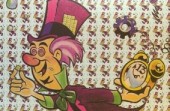
Conspiracy time: “In 1951, a quiet, picturesque village in southern France was suddenly and mysteriously struck down with mass insanity and hallucinations. At least five people died, dozens were interned in asylums and hundreds afflicted. For decades it was assumed that the local bread had been unwittingly poisoned with a psychedelic mould. Now, however, an American investigative journalist has uncovered evidence suggesting the CIA peppered local food with the hallucinogenic drug LSD as part of a mind control experiment at the height of the Cold War.”
Really? Would the CIA actually have put an entire French village through the agonizing-and in some cases fatal-hallucinations that the residents of Pont-Saint-Esprit endured? I mean, it is the CIA, so it’s hard to put it past them. And everybody hates the French. Still, an actual chemist is rather skeptical. He makes a pretty good case.
Plant Actually Toilet

“Apparently scientists now think that a pitcher plant they had assumed was so large that it ate shrews is actually a shrew toilet. And just to illustrate that point further, here is a shrew taking a dump in one. UGH! Look at his little guilty, smiling face. Have some decency, you shrew!”
Is Reality TV... Not Totally Real Or Something???

Is reality TV somehow less than real? Here is David Weintraub, whose principal industry at this time is to provide tragic characters for reality TV, describing how the producers of a show called Sober House worked with former California gubernatorial candidate Mary Carey: “They took Mary Carey, they put her in a room, and they said to her, ‘Your story’s shit, Mary. Your story sucks on this show. We just paid you a lot of money, and your story sucks. Here’s what you need to do to make our show better. We call Dr. Fisher, he’s gonna remove your breast implants on the last week of the show, and you’ll recover in the Sober House, and we’ll show this complete transformation of you leaving porn behind by removing your boobs. And we have you set up, you’re gonna manage a Starbucks.’”
Tina, Twitter; Twitter, Tina

Tina Brown has a Twitter now. Yay! This should be great. But the real question is: whose job is it to print out all her followers’ Tweets so she can read them?
David Foster Wallace, "Viking Poem"
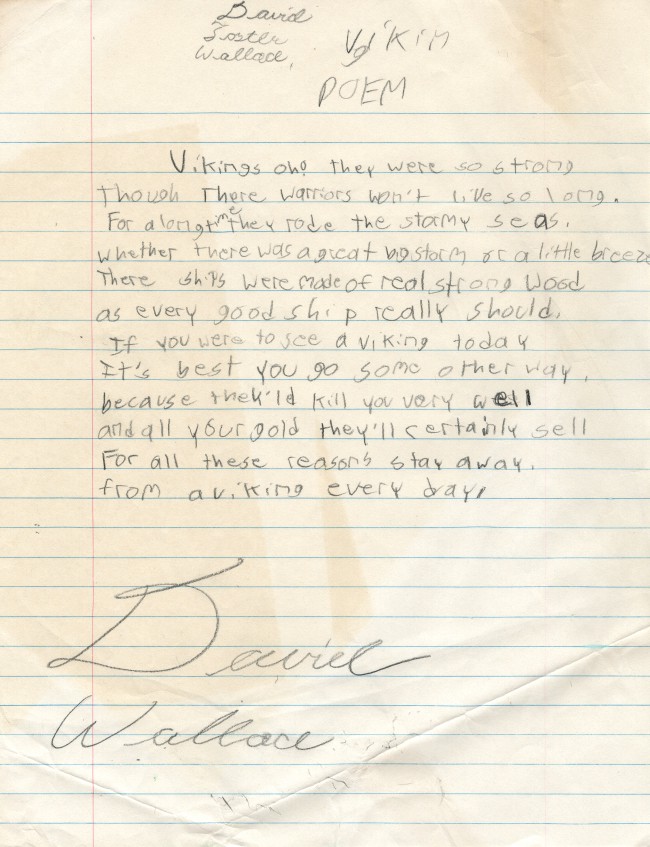
The recent acquisition of the late David Foster Wallace’s archives by the University of Texas’ Harry Ransom Center will no doubt provide both scholars and fans with countless layers of information to process and debate. It has also provided this poem about Vikings, written by a six- or seven-year-old Wallace, which I cannot help but find both charming and tragic. (Not that I am suggesting there is anything romantic about suicide, because we don’t do that here.) There’s just a sweetness to this poem and the obvious enthusiasm with which he wrote it that makes me reflect on the joys of childhood that we tend to forget. [Via]
